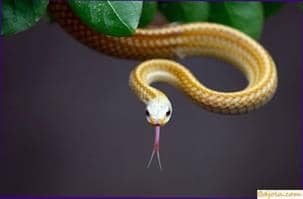
In early August, I transported bees from sunflower to tobacco. The field of tobacco was near the forest. Apiary placed in a clearing. During the inspection, the hives in one of them suddenly discovered a snake. She climbed into the ventilation slits and curled into a tangle between the net and the roof lining.
The first desire was to deal with an uninvited guest, but after reflection, took a smoke and smoked it. Two days later I found a snake in a nearby hive. I was short of time, so I decided not to touch it. When I arrived the next time, there were already two snakes in the hive. As the night was approaching, I had to leave them. In the morning one snake crawled away, and the other I carried in the roof of the hive into the forest and let it out. Then in all the hives, closed the cracks and ventilation holes.
It’s good that everything ended well.
Щавельная кислота для пчел. Восковая моль в сотах.
Beer lover's section